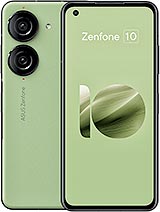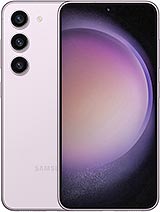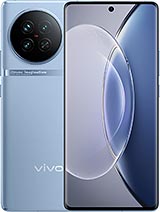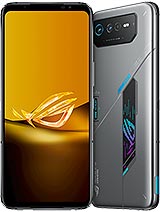Sony Xperia 5 V review

Android 13 with clean Xperia UI
The Sony Xperia 5 V boots Android 13 skinned with the most recent version of the Xperia UI, which has a very stock Android feel, though there are in-house bits if you look deep enough.
Starting with some of the basics, there's an always-on display feature (AOD) that goes by Google's Ambient display name and has a fairly limited set of customization options.

The lockscreen is business as usual with a clock (that you can customize), a shortcut to the camera and another one for Google Assistant.




Always on display • Always on display • Always on display • Lockscreen
The homescreen, too, is as standard as they come. The Google feed is the leftmost pane, but you can disable it if it's not your thing. The quick toggles/notification area is Google's stock, too. With this version of Android, you get Notification history, and the Bubbles shortcuts as part of the Conversations features - both available on the Xperia, unlike some more heavily customized UIs.






Homescreen • Folder view • App drawer • Notification shade • Quick toggles • Notification settings
The Android OS is highly customizable via the Wallpaper and Style menu. Here, you can choose from a number of static and live wallpapers. A cool thing about the live option is the various effects that are applied to the wallpapers in real-time - for example, a cool disturbance during charging.
You can choose from the typical color palettes, depending on the wallpaper. You can customize them, too. And you can opt for Themed Icons - the system icons will match the color palette, but the feature is still in beta and may not always work as intended.





Wallpaper and style • Wallpaper and style • wallpapers • wallpapers
This brings us to one of the Sony exclusives, which deserves a mention even though it's not new - Multi-window manager. You can access it from the task switcher or from the dedicated shortcut icon on the homescreen, and you get sort of like two stacked task switcher rolodexes with your currently opened apps to pick one for the top half and one for the bottom half of the screen. The rightmost pane in each half lets you launch another app, not just pick from the already running ones.
The phone remembers three previously used pairs, so you can access them directly. It's worth mentioning that the window split can be done in almost any arbitrary ratio, not just 50/50.



Task switcher • Multi-window switcher • Pop-up window
Side sense is another of the in-house Sony features. A handle on the side of the phone opens up a menu of shortcuts to apps and features, most of them user-configurable. The 21:9 multi-window pairs can be customized here, but they don't go into the three-pair shortcuts in the regular task switcher. A recent addition to the menu is a widget to control the Sony headphones app - handy if you have a set of those.
There's a fairly standard set of gestures for call handling, as well as a one-handed mode and smart backlight control. It's in this menu that you'll find the navigation options with the two basic types available - gestures or a navbar.
Pros can enjoy the occasional game too, so the Xperia has Sony's Game Enhancer as part of its software package. It's a comprehensive utility with two main interfaces - a game hub/launcher, and an overlay you pull out from the side while in a game.
Performance profiles (or Game Mode) can be set on a per-game basis, and it's here that you get to set the screen refresh rate and lock it at 120Hz regardless of whether the game supports it (though you will still get 60fps if the game does not support HFR). Additional sliders let you select Touch response speed and touch tracking accuracy.
There is also a 240Hz setting, which inserts a black frame between each 120Hz frame. This reduces the blur, and Sony recommends using this option in games that support 120fps.
There is also H.S. power control - a setting that deals with power management. When the feature is enabled (look for it in Settings while in-game), and the phone is plugged in, it won't actually charge the battery but will only essentially meet your current power consumption so as to avoid unnecessary heat generation - H.S. stands for Heat Suppression.
The Focus setting is an array of toggles that let you disable pesky notifications, turn off adaptive brightness, disable the camera button and the side sense functionality - limit distractions.
There are also screenshot and video capture features.

The phone uses Google's own Photos and Files for gallery and file management purposes. It does come with Sony's own Music player, though.




Music • Music • Photos • Photos
Bravia Core was exclusive to Bravia TVs until 2021. It offers a rich Sony Classics movie catalog, and you can also watch a few of the blockbuster titles for free on a trial basis. The service offers movies up to 4K60 quality, and some titles even have MAX enhanced audio. You get credits for 5 blockbuster titles and 1-year free access to Bravia Core with your new Xperia 5 V (the offer is market dependent).
Sony's Music Pro is a paid service that allows you to record singing and instruments and upload this recording to the cloud for processing. The audio will then get processed as if you've used a high-quality condenser mic in the acoustic environment of a professional studio.
The new Video Creator app allows you to easily edit your videos and prepare them for upload on social media. There is even Auto Edit feature, where you just select the media, and the software will combine them and edit them automatically. This app is intended to be used with portrait videos, though we found it working with landscape, too. A unique feature, according to Sony, is that it will handle 4K videos up to 120fps, including slow-mo ones.
Performance and benchmarks
The Sony Xperia 5 V, just like the Xperia 1 V, employs the latest Snapdragon 8 Gen 2 chipset. It is coupled with LPDDR5X RAM and UFS storage chips.
The Snapdragon 8 Gen 2 packs an octa-core processor with one prime core, four performance ones (2+2), and three efficient cores, a.k.a. 1+2+2+3 configuration. This means the CPU contains 1x3.2GHz Cortex-X3 + 2x2.8 GHz Cortex-A715 & 2x2.8GHz Cortex-A710 & 3x2.0GHz Cortex-A510 CPU cores.
Then there is the Adreno 740 GPU - the most capable mobile GPU on the market right now.
There is a single memory configuration with 8GB RAM/128GB storage. The phone offers microSD expansion, which is probably the only top-tier non-Sony smartphone to do it.
And now, let's run some tests.

The Xperia 5 V and the most powerful chip on the market - the Snapdragon 8 Gen 2 - do very well on the CPU tests, even if its scores didn't top the chart (still in the same ballpark as the rest of the SD8G2 devices).
The same is valid for the GPU scores - not the best of the bunch, but still in the same ballpark.
Quite expectedly, the compound AnTuTu tests put the Xperia 5 V a little behind the rest of the SD8G2 bunch, but flagship-grade, nevertheless.
As far as raw performance is concerned, the Xperia 5 V has the best chip and one incredibly capable and immersive display, so we cannot really want more here.
Throttling and overheating cameras, display, chipset, and even battery is something that has been plaguing Sony's phones for years. The Xperia 1 V was the first flagship Sony phone in a long time that managed not to overheat and throttle its display. And the Xperia 5 V continues the same trend - we never saw the screen drop from 120Hz to 60Hz due to overheating. We saw a few drops when running stress tests for hours, but that is not a real-life scenario, and it was for a few seconds, not minutes.
The stress tests we ran are still uninspiring, though in line with most flagships with passive cooling nowadays. The Xperia 5 V scored 45% in CPU stability and 35% in GPU stability. These are subpar numbers, unfortunately.
The Xperia 5 V never became hot, warm - yes, but never uncomfortably hot. That is probably due to the heavy chipset throttling applied when running prolonged stress tests.
Still, a sort of a silver lining: we never saw the display and the cameras overheat.
Finally, we played a high-end game for about 30 minutes, and the phone never visibly throttled or overheating. And it is summer around here, so that is definitely a good thing and can give you an idea for the real-life performance and usage.
Reader comments
- Anonymous
- 23 Mar 2025
- Nu7
Thank you for you honest comment. It's an encouragement to get the phone.
- snased
- 20 Mar 2025
- JaE
As a zenfone 10 user, god damn the battery life is insane but also those benchmark scores... like how is this so far behind all other sd8 gen 2 phones? it's almost like they're using different chipsets😭
- Kookookid
- 06 Nov 2024
- DxV
5ii was great for me. Now lots of pink and green lines ruined it. It's always something














































